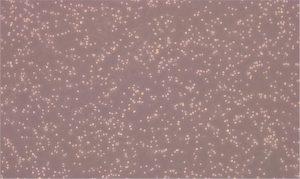When it comes to science and research I think we can all agree that the path to reliable and consistent results begins with the basics. These may not be the most exciting things to discuss but they are the foundation of designing and conducting quality experiments. We all know that running the proper controls are important yet this step often gets skipped in the interest of time or maybe because we feel we don’t need them. So with that in mind here are some basic tips to follow for successful NucleofectionTM experiments. We’ve covered the first topic already: Always run your positive and negative controls.
Next up is passage number. Cells of a lower passage number typically respond better to transfection and will have higher transfection efficiencies and viabilities than those of higher passage numbers. For the most efficient gene transfer, we recommend using cells that are in logarithmic growth phase and at a passage number lower or less than 10 – 15 (from the time of thaw).
When working with adherent cells for transfection, the cells should be grown to a confluency level of 70 – 85%. Higher or lower than this will give you sub-optimal results. Nobody, including us, wants that.

When using suspension cells, they should be transfected when they are in the logarithmic growth phase. Generally, this corresponds to a density of 2 – 5 x 105 cells per ml.
For both adherent and suspension cells, it is important to make sure that the culture is growing properly and that the cells have the proper morphology. If they do not, this could indicate contamination with bacteria, fungi, or mycoplasma.
Cell harvesting and handling comprises about 95% of the troubleshooting I do regularly and proper handling leads to better results. Before harvesting your cells, wash the monolayer to get rid of any residual growth medium. Always refer back to the optimized protocol to see what is required and never include any extra wash or centrifugation steps that are not mentioned in the protocol.
Never vortex or scrape your cells. Suspension cells just need to be centrifuged to remove the growth media and then directly resuspended in NucleofectorTM solution (no extra wash required!)
Lastly, a word about centrifugation. You have probably noticed that we do not use RPM’s. Our standard is 90xg (there are some exceptions based on the cell type so be sure to check your protocol). The speed you select to obtain 90xg will depend on your rotor so consult the operation manual for your centrifuge.
Centrifugation speeds and g-forces may not be as critical with other transfection methods but they are with Nucleofection so be sure to calculate those g’s! Here’s a handy website you might find helpful:
Centrifuge Rotor Speed Calculator
I wish you good luck with all of your experiments and we are always just a phone call or email away.
Written by Sean
Scientific Support Specialist, Lonza Pharma-Bioscience Solutions at Lonza




